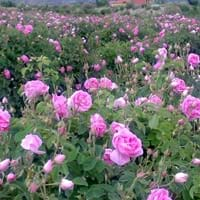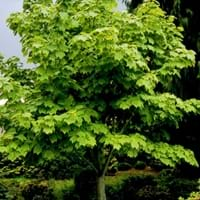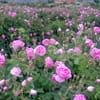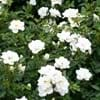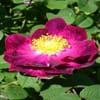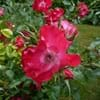Life Span
Perennial
Perennial
Type
Flowering Plants, Ornamental Plants, Perennial
Tree
Origin
Not Available
Northeastern United States, Mid-Atlantic United States, Southeastern United States, Canada
Types
Summer Damasks, Autumn Damasks
Not Available
Number of Varieties
Not Available
Habitat
gardens
moist forests, Slopes
USDA Hardiness Zone
Not Available
3-7
AHS Heat Zone
Not Available
7-1
Sunset Zone
Not Available
Not Available
Habit
Clump-Forming
Upright/Erect
Flower Color
Pink
Yellow, Yellow green
Flower Color Modifier
Bicolor
Bicolor
Fruit Color
Not Available
Green, Brown
Leaf Color in Spring
Green, Gray Green
Light Green
Leaf Color in Summer
Dark Green, Green
Green
Leaf Color in Fall
Green, Gray Green
Yellow
Leaf Color in Winter
Dark Green, Green
Not Available
Leaf Shape
Pinnate
Maple shaped
Plant Season
Spring, Summer, Fall
Not Available
Sunlight
Full Sun, Partial Sun
Partial Sun, Partial shade
Type of Soil
Loam, Sand
Loam
The pH of Soil
Acidic, Neutral
Acidic, Neutral
Soil Drainage
Well drained
Well drained
Bloom Time
Spring, Late Spring, Early Summer, Summer, Late Summer, Early Fall, Fall
Early Spring, Spring
Repeat Bloomer
Not Available
No
Tolerances
Drought
Not Available
Where to Plant?
Container, Ground, Pot
Ground
How to Plant?
Cuttings
Layering, Seedlings, Stem Cutting
Plant Maintenance
Medium
Medium
Watering Requirements
Average Water Needs
Requires regular watering
In Summer
Lots of watering
Lots of watering
In Spring
Moderate
Moderate
In Winter
Average Water
Average Water
Soil pH
Acidic, Neutral
Acidic, Neutral
Soil Type
Loam, Sand
Loam
Soil Drainage Capacity
Well drained
Well drained
Sun Exposure
Full Sun, Partial Sun
Partial Sun, Partial shade
Pruning
Remove damaged leaves, Remove dead branches, Remove dead leaves
Prune if you want to improve plant shape
Fertilizers
All-Purpose Liquid Fertilizer
All-Purpose Liquid Fertilizer
Pests and Diseases
Beetles, Black Spot, Caterpillars, Downy mildew, Mosaic viruses, Powdery mildew, Rust, Scale insects, Thripes
Anthracnose, Bacterial leaf scorch, Bleeding canker, Decline, Fomes root rot, Ganoderma root rot, Laetiporus root rot, Leaf spot, Powdery mildew, Red blotch, Tar spot, Verticillium Wilt
Plant Tolerance
Drought
Drought
Flowers
Showy
Insignificant
Flower Petal Number
Double
Single
Edible Fruit
Not Available
No
Foliage Texture
Medium
Coarse
Foliage Sheen
Glossy
Matte
Invasive
Not Available
No
Self-Sowing
Not Available
Yes
Attracts
Birds, Butterflies
Not Available
Allergy
Rash
Asthma, Runny nose, Skin irritation
Aesthetic Uses
Showy Purposes
Showy Purposes
Beauty Benefits
Not Available
Not Available
Environmental Uses
Air purification
Air purification
Medicinal Uses
Not Available
Antirheumatic, Cold, Cough, Emetic, gonorrhoea, Kidney problems, Pectoral, Swelling, Vomiting
Part of Plant Used
Flowers
Leaves, Sap
Other Uses
Oil is used in perfume, soaps, creams, etc.
Used as Ornamental plant, Used as preservative
Used As Indoor Plant
Yes
No
Used As Outdoor Plant
Yes
Yes
Garden Design
Container, Cutflower, Feature Plant, Foundation, Mixed Border, Topiary / Bonsai / Espalier
Feature Plant
Botanical Name
Rosa × damascena
ACER pensylvanicum
Common Name
Damask rose, rose of castile
Moosewood, striped maple, moose maple
In Hindi
जामदानी गुलाब
धारीदार मेपल
In German
Damaszener-Rosen
gestreifte Ahorn
In French
Le rosier de Damas
érable rayé
In Spanish
Rosa de Damasco, Rosa de Castilla
arce rayado
In Greek
δαμασκηνό τριαντάφυλλο
ριγέ σφενδάμου
In Portuguese
rosa damascena
plátano listrada
In Polish
Róża damasceńska
paski klonu
In Latin
surrexit Damascum
alba acernis
Phylum
Magnoliophyta
Magnoliophyta
Class
Magnoliopsida
Magnoliopsida
Family
Rosaceae
Aceraceae
Clade
Not Available
Angiosperms, Eudicots, Rosids
Tribe
Not Available
Not Available
Subfamily
Not Available
Not Available
Number of Species
Not Available
Not Available
Importance of Damask Rose and Moosewood Tree
Want to have the most appropriate plant for your garden? You might want to know the importance of Damask Rose and Moosewood Tree. Basically, these two plants vary in many aspects. Compare Damask Rose and Moosewood Tree as they differ in many characteristics such as their life, care, benefits, facts, etc. Every gardener must at least have the slightest clue about the plants he wants to plant in his garden. Compare their benefits, which differ in many ways like facts and uses. The medicinal use of Damask Rose is Not Available whereas of Moosewood Tree is Antirheumatic, Cold, Cough, Emetic, gonorrhoea, Kidney problems, Pectoral, Swelling and Vomiting. Damask Rose has beauty benefits as follows: Not Available while Moosewood Tree has beauty benefits as follows: Not Available.
Compare Facts of Damask Rose vs Moosewood Tree
How to choose the best garden plant for your garden depending upon its facts? Here garden plant comparison will help you to solve this query. Compare the facts of Damask Rose vs Moosewood Tree and know which one to choose. As garden plants have benefits and other uses, allergy is also a major drawback of plants for some people. Allergic reactions of Damask Rose are Rash whereas of Moosewood Tree have Asthma, Runny nose and Skin irritation respectively. Having a fruit bearing plant in your garden can be a plus point of your garden. Damask Rose has no showy fruits and Moosewood Tree has no showy fruits. Also Damask Rose is not flowering and Moosewood Tree is not flowering . You can compare Damask Rose and Moosewood Tree facts and facts of other plants too.
